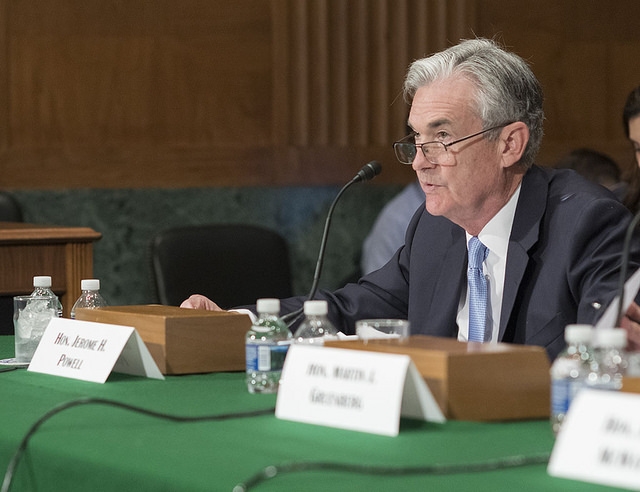Adjusting for interest rate rises
On 27 February, the new chair of the Federal Reserve, Jerome Powell, gave his first speech in the post. Unlike many of President Trump’s choices for cabinet secretaries, Powell is not a controversial one. He is expected to follow Janet Yellen’s footsteps and adopt a cautious interest rate policy – the former Fed chief even describes Powell as “part of the consensus”.
Even so, interest rates will probably rise several times over the next two years. Policymakers’ median forecast is for three quarter-point interest rate rises this year and two more in 2019.
Although 2018 has not yet seen its first rise, many lessors are already realising the impacts of higher rates in their aircraft rental contracts. Steven Udvar-Házy, executive chairman of Air Lease (ALC), said on a recent fourth-quarter earnings call that he sees increased costs across all forms of financing for airlines.
“Whether it’s EETC (enhanced equipment trust certificates) or whatever financing structure, those costs are going to go up,” he said. “Most of our customers are non-investment-grade credits, and so we believe their interest rate cost will probably go up at a faster clip than ours will as an investment-grade company.”
John Plueger, ALC’s chief executive officer and president, said on the same call: “We are delivering airplanes that have interest rate adjusters, so we’re seeing the impact of a rising rate environment show up today. We’re looking at higher interest rates, but fortunately we have the adjusters in our lease contracts for forward deliveries, which increase our lease rates as interest rates rise.”
Understanding the impact of rising interest on the aviation industry is not straightforward. Rate increases are likely to result in more interest rate adjusters, which alter lease rentals according to changes in interest. Once common in leases, especially before the financial crash of 2008 when rates were more volatile, such adjusters all but disappeared after interest flat-lined at a record low. However, if leasing companies continue to provide fixed-rate leases rather than ones with adjusters, airlines will likely find these attractive compared with bank financing.
Will increases in interest rates impact aircraft values? Many financiers think rises could bring values down. Higher interest rates are likely to lead to higher discount factors on aircraft, and discounting cash flows by a higher amount can decrease the value of an aircraft.
Higher rates will disadvantage most businesses in this segment except banks and noteholders. However, debt margins are low for airlines right now and many of them should be able to absorb the impact of a few slight rate rises.
One of the biggest questions is how rate rises will impact the new capital that has flowed into this sector over the past few years. Some of the industry’s sale-and-leaseback money may not survive. New entrants will have capital expenditure targets and if better returns materialise in other markets, they may deploy their capital elsewhere.
Aviation banking sources disagree slightly on the subject. Some believe most of the new money will leave aircraft finance, while others caution that the exodus will be smaller than expected. If the new money is from economic investors hunting for value, they would likely leave the sector if interest rates go up significantly.
However, some financiers tell me that many of the new investors are deepening their understanding of the sector, and are in it for the long haul.
That said, there is still a huge supply-demand imbalance in the sale-and-leaseback market and interest rate rises may necessitate a correction in lease rates. But that may be cancelled out by higher returns attracting more players to the market.
There are many factors that could impact interest rates. One prominent example is President Trump’s recent tax reforms. US-based lessors and airlines have been vocal about how Trump’s tax cuts have helped their businesses. ALC enjoyed a $354 million benefit from the December 2017 US tax reform legislation, increasing the Los Angeles-based lessor’s net profit to $756 million for 2017. Spirit Airlines expects a $200 million income tax expense reduction in the fourth quarter of 2017. Southwest Airlines said the reforms will lead to further investment in the airline.
These reforms could also impact the financing strategies of US carriers. From 2018, up to 30% of a company’s Ebitda (earnings before interest, taxes, depreciation and amortisation) can be deducted as interest expenses. There is no cap on interest expense deductions for lease rentals, so this makes leasing more attractive than financing for US airlines. However, there is also another US tax law change that provides for up to 100% bonus depreciation, which encourages investment and makes purchasing aircraft attractive to airlines. US carriers will need to weigh both of these tax law changes to determine whether to lease or finance.
Although Trump’s tax cuts, along with $1.5 trillion in infrastructure spending, are expected to boost the US economy in the short term, they will also escalate the budget deficit. Such policies will make matters more complicated for Powell and the Fed when reviewing interest rates.
